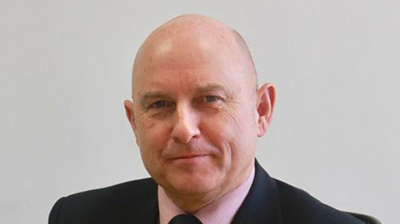
Stellantis has ploughed some €33 million into two of its global testing facilities to support its long-term strategy to achieve best-in-class electric vehicle (EV) performance and master the highest level of autonomous driving technology. The investments, along with other R&D initiatives, are designed to accelerate the company’s transformation into a sustainable mobility tech company and meet its targets for a 50% reduction in carbon emissions from 2021 levels by 2030 and carbon net zero emissions by 2038.
The initiative has seen the Orbassano Safety Centre, near Turin, Italy, significantly upgraded to host four test tracks with four impact points and capabilities for full testing of battery-electric vehicles (BEVs) and automated driving technology for passenger cars, trucks, and light commercial vehicles.
In addition, the company’s Wind Tunnel in Auburn Hills, Michigan, US, is being scaled up with the addition of moving ground plane technology, simulating on-road travel and providing more accurate aerodynamics measurement of vehicles. Reducing wind drag benefits the driving range of BEVs.
"Our world-class tech hubs across the globe are doing the work today that will make tomorrow's Stellantis vehicles industry leaders in capability, performance and safety," said Harald Wester, Stellantis chief engineering officer.
Dare Forward
Key goals of the Stellantis Dare Forward 2030 strategic plan include reaching 100% of passenger car BEV sales mix in Europe and 50% passenger car and light-duty truck BEV sales mix in the US by 2030.
The €5 million in upgrades for the Orbassano Safety Centre give it the capability to test all types of EVs- mild hybrid, plug-in hybrid and battery electric vehicles. The facility currently runs at least two crash tests a day and is on track to test more than 275 EVs this year. Vehicles tested at Orbassano can be certified to meet more than 175 international safety and technological standards.
Orbassano's test tracks include a computer-driven camera positioning system with 13 moveable outboard camera locations over the impact point. In addition, the tracks include the capability for underbody high-speed video, while up to five cameras can be mounted on board the test vehicle.
All these views, plus the instrumented data, provide Stellantis engineers with data for evaluating current and future vehicle designs. Additionally, the data is shared with Stellantis facilities around the world, including additional safety testing centres in France, the US and Brazil.
Aerodynamics
Aerodynamic efficiency is a crucial difference-maker in the drive to optimise the distances EVs can travel on a single charge. That requires simulating the real driving world as accurately as possible.
At the Stellantis wind tunnel complex in, Michigan, construction is in progress to install moving ground plane technology (rolling road), which simulates on-road travel while allowing test vehicles to remain static. Stellantis is investing $29.5 million in the project.
Belts enable wheel movement at all four corners of the vehicle while a fifth belt runs beneath the vehicle as if it were rolling over a roadway. Moving ground plane technology also enables measurement of ventilation drag, which is the resistance associated exclusively with wheels and tyres in motion, and accounts for up to 10% of total, real-world aerodynamic drag.
The moving ground plane installation, part of an estimated $85 million commitment to the centre, is scheduled to become operational in 2024 and will complement the capability available in other Stellantis facilities, including two based in Europe.
Baby steps
Parents that have switched to electric, plug-in hybrid or hybrid vehicles say their current cars are more effective in helping young children fall asleep, according to the latest research by Citroën UK.
In a study of 2,000 UK parents with babies and young children, over half (56.4%) of those owning an EV said their child found it either as easy or easier to nod off in their current car, compared to petrol or diesel models they had previously owned. Just 11.9% said an EV made it harder to get their children off to sleep, while 15.8% were unsure either way. Nearly half (44%) of all the parents surveyed said they had taken their child on a short car journey specifically to help them fall asleep.
The survey found that on average it takes a child 16½ minutes to fall asleep in a car, with 96% of parents saying their child typically falls asleep in 30 minutes or less.
The top factors that parents felt were most beneficial in helping babies and young children fall asleep on a car journey, were the gentle movements of the vehicle on the road (46%), a comfortable in-car temperature (41%) and a comfortable car seat (40%). More than a third of parents (34%) told Citroën that they find a smooth drive to be the most important factor to help their child nod off.
Eurig Druce, Citroën UK’s Managing Director, explained: “The smooth and silent drive from EVs creates an even more calming environment for children and parents alike. Citroën is committed to offering an electrified variant of every vehicle in the range by 2025. So, everyone can rest assured, our models will continue to provide a calm and relaxing experience for the whole family for many years to come.”






